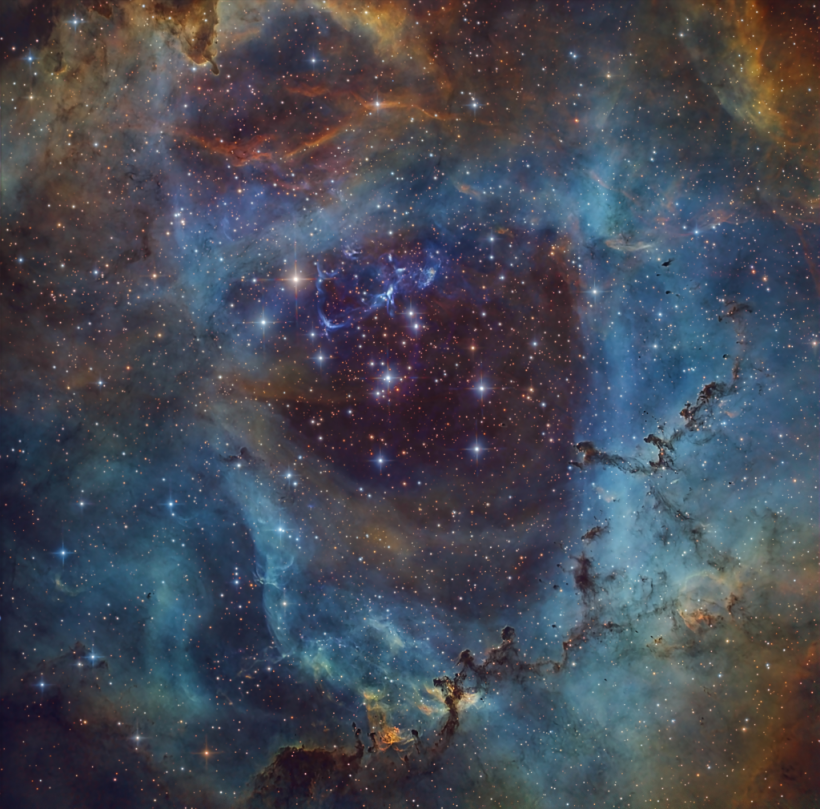As Valentine's Day approaches, NASA's Astronomy Picture of the Day offers a cosmic bouquet to admirers of the universe, showcasing a stunning celestial rose captured in the depths of space.
While roses may typically be associated with vibrant red hues, this particular rose, the Rosette Nebula, boasts a palette of colors beyond imagination. The Rosette Nebula is a stellar nursery where new stars are born amidst swirling clouds of gas and dust, according to NASA.

NASA's picture of the day offers a cosmic rose for the upcoming Valentines Day. This image was captured by Tommy Lease from the Denver Astronomical Society, showcasing the Rosette Nebula in various hues. It features red light representing Sulfur atoms, Hydrogen in green, and Oxygen in blue.
In a captivating image taken by Tommy Lease of the Denver Astronomical Society, the Rosette Nebula is depicted in all its splendor. This cosmic flower spans about 50 light-years across and emanates a mesmerizing glow, captivating astronomers and stargazers alike. Unlike traditional roses, the Rosette Nebula's allure lies not in its red petals but in the intricate interplay of gases and elements that compose its ethereal form. Hydrogen, the primary constituent of this cosmic bloom, emits a radiant green glow, while sulfur atoms contribute to its crimson hues. Oxygen, meanwhile, adds a touch of celestial blue, completing the cosmic color palette. This breathtaking view of the Rosette Nebula offers a glimpse into the dynamic processes shaping our universe. Located approximately 3,000 light-years away in Monoceros's constellation, the nebula serves as a stellar nursery, nurturing the birth of countless stars. According to the Constellation Guide, the Rosette Nebula is a sprawling emission nebula nestled within a molecular cloud in the constellation Monoceros, also known as the Unicorn. At its heart lies the Satellite Cluster, a cluster of young stars formed from the nebula's material in the last 5 million years. The luminous stars of the Satellite Cluster illuminate the surrounding nebula, causing it to radiate with vibrant colors. The nebula's distinctive red glow is a result of the intense ultraviolet radiation emitted by these young stars, which ionizes the hydrogen atoms within the nebula, causing them to emit light. Despite its serene appearance, the Rosette Nebula is a site of intense stellar activity. Teeming with young stars, Herbig-Haro objects, and Bok globules, the nebula is a bustling stellar nursery sculpted by the powerful forces of stellar winds and radiation. The Rosette Nebula spans 130 light-years across and boasts an estimated mass of 10,000 solar masses, making it a celestial marvel of staggering proportions. As Valentine's Day approaches, NASA's Astronomy Picture of the Day presents this celestial rose as a testament to the enduring beauty and romance found in the boundless expanse of the cosmos. Related Article: NASA's Hubble Space Telescope Captures 'Butterfly Nebula' In Stunning Motion | Fun Facts About This Beautiful Space ButterflyThe Rosette Nebula in Various Hues
Sprawling Emission Nebula
An Abundance of Young Stars










